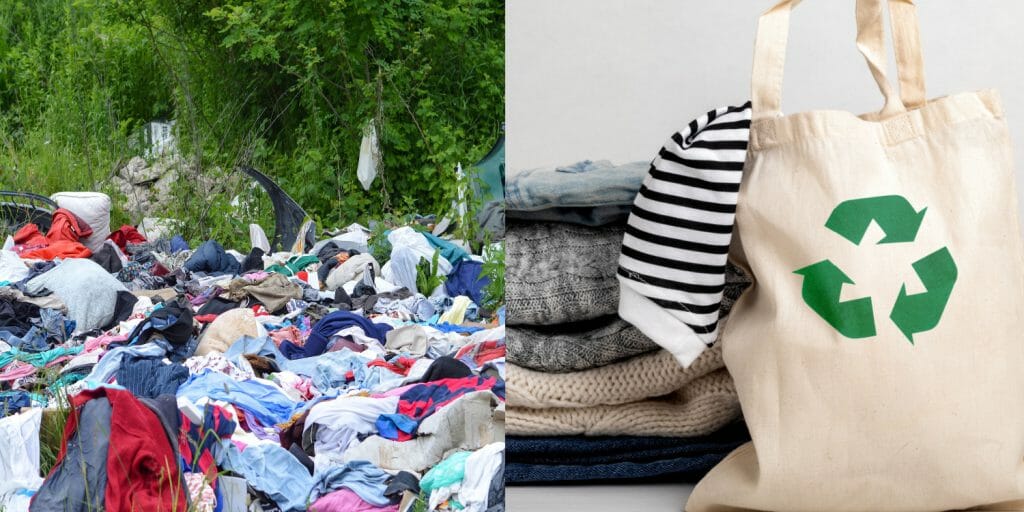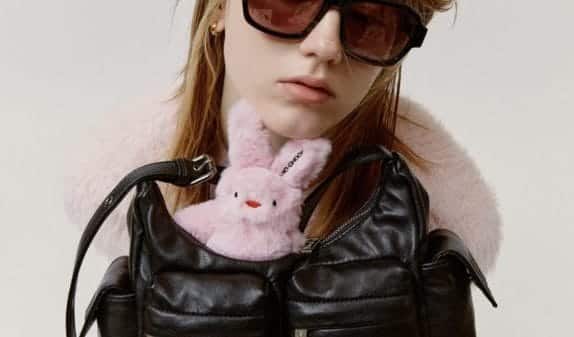Have you ever wondered where your clothes go when you take them back? A recent investigation by Changing Markets found that three-quarters of clothing donated to significant fashion stores, to be reused or recycled, was destroyed.
The pressure group used Apple AirTags to track 21 perfectly conditioned items of clothing as they passed through their takeback schemes. These items were donated to several stores such as H&M, Primark, C&A, The North Face, and many more. This investigation focuses on stores in Belgium, Germany, France, and the UK.
It was found that 76% of these pieces were destroyed, left in warehouses, or sent to Africa which were quickly shredded. A pair of trousers that were donated to M&S were scrapped within a week. Jogging trousers that were donated to C&A were burned in a cement kiln. A skirt donated to H&M traveled 24,800 kilometers from London to a waste dump in Mali.
Only three items ended up in Ukraine and only five items were reused in Europe or ended up in a reuse shop.
Despite this, these brands have slogans surrounding recycling and sustainability. H&M’s scheme is “let’s close the loop”, and the C&A slogan is “Give your clothes a second life”. The North Face has “let’s complete the circle”. Major fast fashion giant, Boohoo, has been very open regarding their plan to make their products more sustainable.
Most of these schemes promise not to scrap usable clothing. None of the named brands that the Changing Markets Foundation donated keep a public record of the fate of the clothing donated to them.
A Conversation On Greenwashing
This investigation becomes part of a larger conversation surrounding greenwashing. Greenwashing is a tactic that companies use to appear more sustainable than they are. Greenwashing diverts our attention and leads us to the belief in ethical buying. It means that we miss supporting companies that are trying or actively reducing their environmental impact.
Urska Trunk, Changing Markets campaign manager, said:
“The promises made by H&M, C&A, and Primark are yet another greenwashing trick on customers. Our investigation suggests that items in perfect condition are mostly destroyed, stuck in the system or shipped across the world to countries that are least able to deal with the vast torrent of used clothing from Europe.”
Tunk added, “The schemes add insult to injury by offering customers vouchers, discounts, or points to buy more clothing, amplifying the fast fashion model that is overflowing with waste”.
Being More Sustainable In Fashion
So, how do we be more ethical when it comes to fashion? Fast Fashion is alluring with high discounts and skyrocketing sales. For example, the renowned PrettyLittleThing Black Friday sale. In 2022, the fast fashion brand had a 99% off sale.
Not only that, microtrends and the cycle of ‘what’s trending in fashion’ are ever-changing, which makes it easier for fast fashion brands to keep up with and churn out new products at a quicker rate. A huge example of this was the cow print trend of 2021.
However, some fast fashion brands are attempting to be more environmentally conscious. ASOS released a new website recently, ASOS Sample Sale. The aims of the website are to get rid of stock with every item being £5.
With this in mind, here are five ways that you can incorporate ethical buying habits when shopping:
1. Donate Clothes To Charity Shops
Instead of binning or discarding your clothes, donating them to charity not only helps the environment but also gives back to the community. According to Oxfam, one of the biggest sources of funds raised by charities is secondhand clothes.
Get all your unwanted clothing together, find a cause you want to support, and share the love. Give your clothes a new lease of life and love!
2. Repair Your Clothes
Mending what you wear does a lot for the environment. Instead of throwing it in a landfill, mend it! Got an old pair of jeans that have a pesky hole? A button missing? Clothes that are too big? Too long? Too small? A simple YouTube tutorial and a needle and thread are all you need!
3. Upcycling Your Clothing
Dedicate your time and turn something old into something new! Upcycling may require some basic sewing skills; however, the end product will be worth it.
Dye a stained dress, turn an old t-shirt into a tote bag, embroider a new pattern, or patch some jeans. There are multiple ways you can turn old clothes into something completely brand new.
Below is a Tiktok which highlights a five-minute fashion upcycle, turning an old pair of jeans into a cute bag!
@perfeklymperfek_ Denim upcycle that will take 5 minutes. #fashiondiy #blackfashionmom #styleinspo ♬ original sound – Fashion✨DIY✨Style Creator ✨
4. Buy Preloved Items
Buying preloved is now just as easy as it has ever been. You can do it from the tip of your fingers at home. Apps like Depop and Vinted have had growing popularity. Depop has 140,000 listings daily and 30 million registered users worldwide. On Vinted, there are 75 million users and there are 180 million listings on the app
eBay has helped reduce the stigma of buying preloved items by sponsoring Love Island. Following this sponsorship, there are 881% more searches in ‘eBay preloved.’
5. Be An Active Fashion Activist
In order for transparency, better human rights, and ethically sourced fashion, you can support campaigns that back these initiatives.
TRAID educates those in schools about sourcing their clothes in an ethical way. Fashion Revolution is an organization in response to the Rana Plaza disaster in 2013. The organization, Fair Wear, works with brands, workers, and industry influencers to improve labor conditions in garment factories.
Fashions Future For The Environment
Pushing brands to be more transparent with where their clothes end up and where their clothes are sourced is never more important than it is right now. Fast fashion is the second biggest consumer of water and is responsible for 10% of global carbon emissions. According to the UN Framework Convention on Climate Change, emissions from textile manufacturing alone are projected to skyrocket to 60% by 2030.
So go into a charity shop, and try something new with your old clothes. Become more environmentally aware of the brands that you shop for and their sustainability models. Shop consciously.














